Features and varieties of silver birch
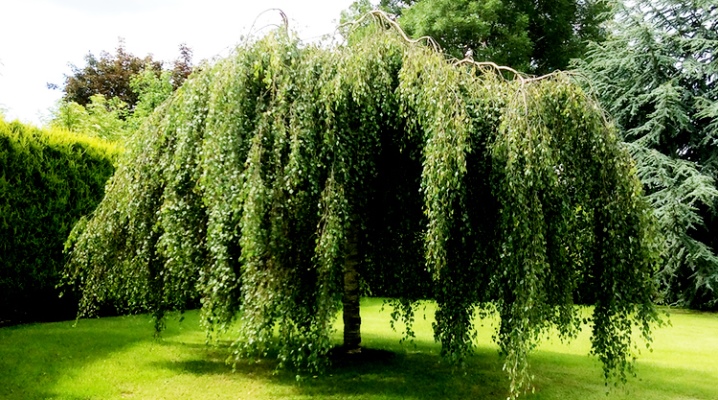
Every person from childhood knows about the drooping birch. Many signs, fairy tales and folk legends are associated with this tree. This culture grows almost everywhere - both in home gardens and in forest belts near settlements. On the farm, it is used for the manufacture of bath brooms, birch bark, as firewood. Birch differs from other crops for its unpretentiousness, rapid development and decorative characteristics.
Botanical description
Hanging birch - Latin name Betula pendula, genus - Birch (Betula), family - Birch (Betulaceae). The culture also has other names - warty birch (Betula verrucosa), weeping birch, hanging birch.

Culture has a special life form - meso-phanerophyte. This includes a variety of trees and shrubs. These are plants whose regeneration buds are located above the ground, the height varies from 8 to 60 meters. In special conditions, birch grows up to 35 meters, the trunk diameter varies from 60 to 80 centimeters. It has a single trunk and a spreading crown, smooth white bark, which can flake off in thin layers. Closer to the root, the trunk becomes black-gray and rough. At first, the trunk of young birches has a brown tint, and closer to 10 years it becomes white.

Birch is a monoecious plant, that is, inflorescences of different sexes (pistillate and staminate) are on the same culture. The female fruits begin to appear in the spring when the leaves are in full bloom. Men's earrings are in the fall. They grow in bunches of 1-4 pieces; during growth, the catkins lengthen 2-4 times. Flowering takes place in June, for 15-20 days.
The branches of a birch of this species are drooping. Young shoots of branches, which are not a year old, usually have a reddish-brown tint. They have wart glands.
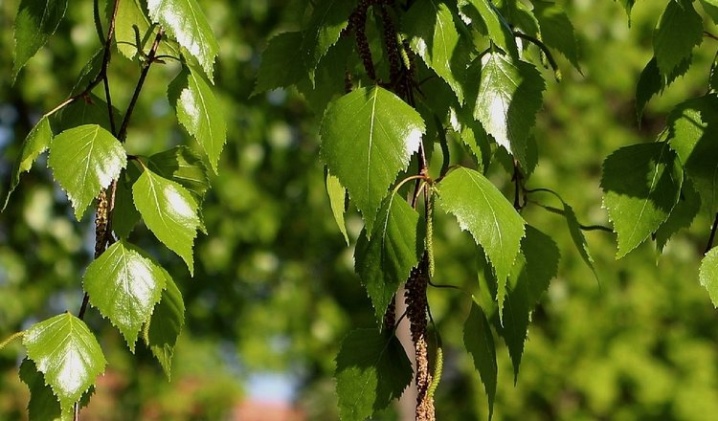
The buds of the plant are red-brown, sticky, with a specific smell and taste of resin. Anatomical and morphological features of the leaves: in length they reach a size of 3.5-7 centimeters, in width - 2.5-5.5 centimeters, have a triangular-rhombic or deltoid shape with doubly jagged edges.
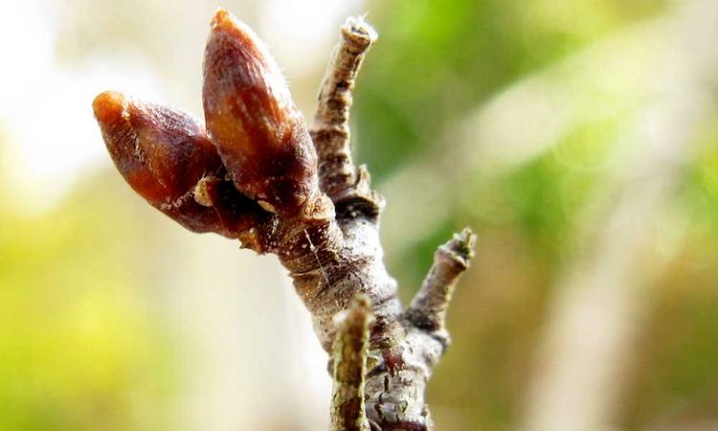
Once the leaves have blossomed, their surface becomes sticky and smooth. On the front side, the sheet is shiny, dark green in color, on the underside of the reverse side, the surface is matte and green. The size of the petioles is small, 2-3 times shorter than the leaf itself. The leaf arrangement is next.

Birch leaves are used to determine the ecological characteristics (degree of pollution) of the environment; for this, the method of fluctuating asymmetry is used (these are minor deviations from mirror symmetry). With small deviations, one can judge the influence of unfavorable factors. For the assessment, a scale with five points is used, where 1 point is the norm, and 5 points is a critical condition. An asymmetry of 5 points is found in areas with a high rate of transport and industrial emissions.

The culture can grow in similar conditions, as it has high dust and gas trapping characteristics. The fruits are oval in shape and have small wings. In one earring, the number of nuts can reach 500 pieces. From September to the end of February, the fruits fall off the birch.

Birch differs in rather intensive growth, but its root system is weak.During strong winds or storms, the tree is most susceptible to stalling. In favorable conditions, a culture can live from 120 to 150 years. Hanging birch has a positive attitude to light - it is a light-loving culture, sometimes slight shading is allowed.
There is also a decorative dwarf species of drooping birch - birch on a trunk. This crop has a smaller size that can be controlled by forming pruning.

Homeland of growth
Hanging birch has a fairly wide growing area. In mountainous areas, birch forests can extend to an altitude of 2,100 meters. In Russia, the habitat of warty birch covers almost the entire territory of the country - the Urals, Western Siberia, Eastern Siberia, with the exception of the Far North and southern regions. The largest distribution is in the European part and the middle lane. Outside the territory of Russia, culture lives in Western Europe, Central Europe, North America.
Hanging birch is found both in birch forests and in mixed deciduous forests. In the steppe, it forms a kind of "forest islets". It grows easily in places of fire, in abandoned areas, roofs of old houses, roadsides.
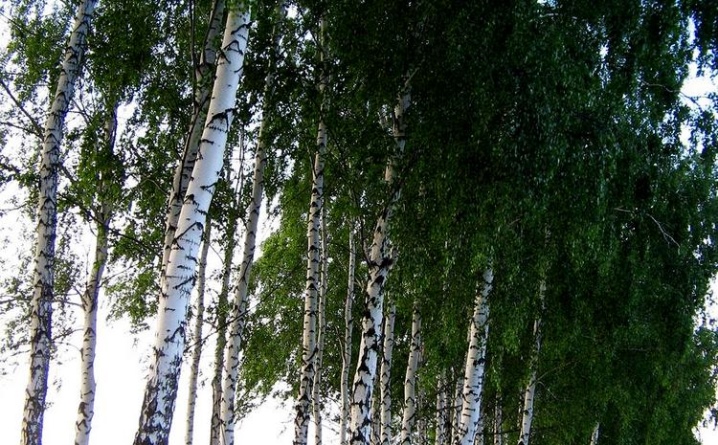
Popular varieties
The genus of birch has about 40 species, the most popular is the drooping birch. The seedlings of this culture are quite frost-resistant, capable of surviving temperatures down to -40 ° C.
"Dalecarlian"
The homeland of this birch is the Scandinavian Peninsula; on the European territory of Russia, such a variety can be rarely found. Coexists well with other types of deciduous trees. It is mainly used for landscaping in Europe. Also, the tree is planted by gardeners on their plots.
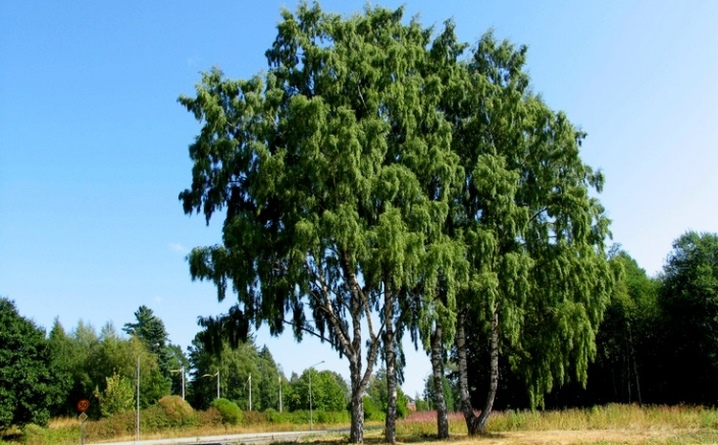
The culture is light-loving, prefers medium moisture soil, does not require a lot of heat. The main feature and difference of the variety is the deeply dissected shape of the leaves. "Dalecarlian" birch has a spreading crown with hanging branches and a straight trunk. It grows up to 20 meters in height. The root system is represented in the form of a rod with thin lateral roots located closer to the upper layers of the soil.
"Purpurea"
Birch "Purpurea" has an unusual shade of leaves and a conical crown, the bark is dark, black and gray. The plant is small and narrow, grows for a long time, has warty branches. It reaches a height of 10 meters, and the diameter of the crown is 4 meters. The shape of the leaves is rhombic, the color is dark red in young varieties, further the foliage acquires a dark purple hue.
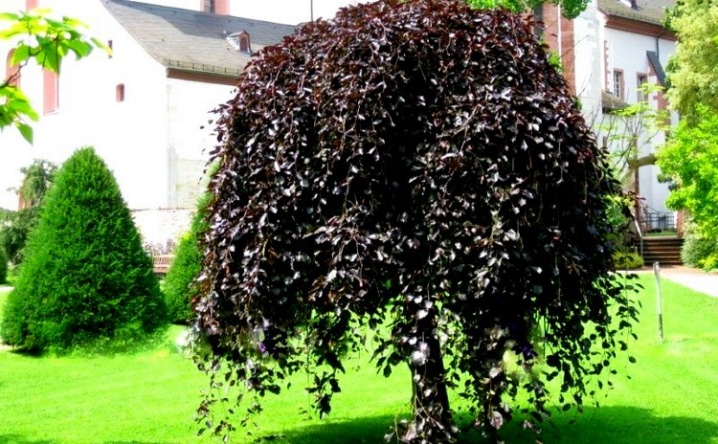
Grows in loamy and sandy loam areas. Do not allow the proximity of groundwater. Light-loving culture, in the shade it begins to turn green.
Royal Frost
The Royal Frost variety has a pyramid-shaped crown and reaches a height of about 9 meters. The leaves are claret-purple with a smooth surface, rhombic shape. The bark is white, in young trees it is bronze.
The birch of this type is light-requiring, but a small shadow is also allowed. It is unstable to atmospheric pollution, but it freely lives on soils of different composition, acidity and density.
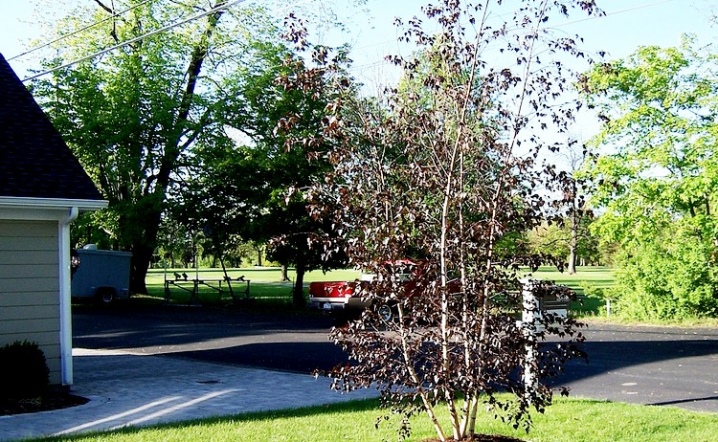
It is preferable to plant on sandy loam, loam, drained, slightly acidic and moderately moist soils.
Crimson frost
The culture reaches a height of 20 meters, the coverage of the crown is about 6 meters. Crimson frost birch is a branchy, deciduous, fast-growing tree. The leaves are oval-ovoid, pointed upward, purple in color.
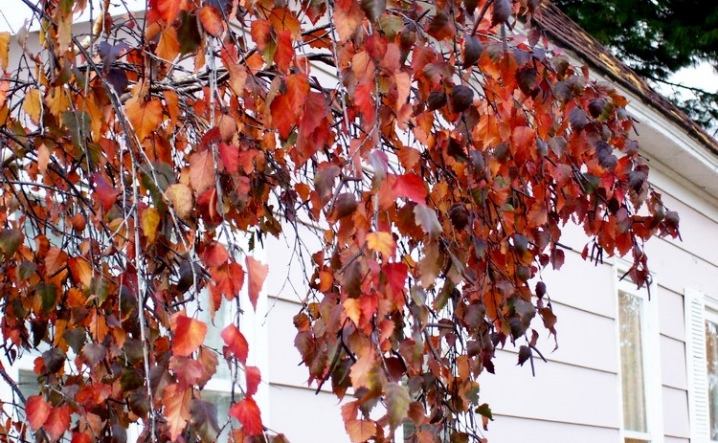
The variety is highly dependent on lighting and “blooms” only in well-lit areas. Does not require constant watering, moisture is needed only during dry periods. The culture is frost-resistant.
"Laciniata"
The main differences of the variety are the oval-shaped crown and cut toothed leaves. In height "Laziniata" grows up to 12 meters. The trunk is white, the young shoots are brown.
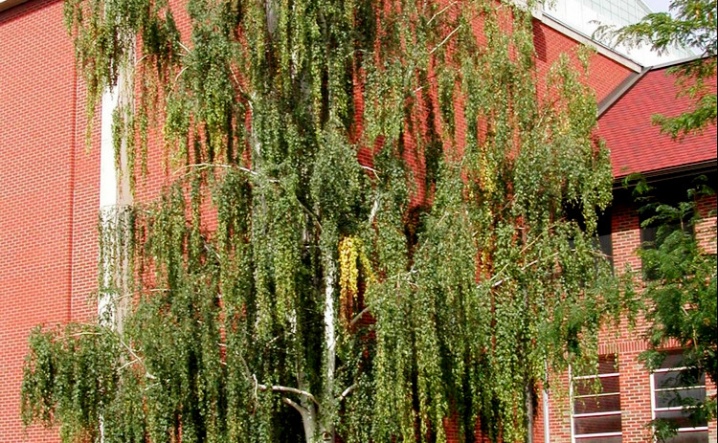
Hardy enough, but young trees up to a year can freeze slightly. Light-loving culture.Prefers loamy and sandy loam soil, does not tolerate groundwater. Not resistant to bad weather conditions.
Youngii
Youngii birch on a trunk is a small tree (dwarf), has a thin umbrella-shaped crown. The branches of the variety hang down and reach the surface of the ground, they require periodic pruning. It grows quickly - up to 100 centimeters per year. In standard crops, the height depends on the grafting. The lifespan is up to 120 years.

The bark is white, brown at a young age and resembles alder. The leaves are triangular in shape and pointed at the ends. The root system is well developed, but located at a shallow depth.
Frost resistant. During the winter, various rodents can damage it.
"Trosts the Dwarf"
Birch "Trosts Dwarf" (opened in 1978 in the USA) is a miniature variety with an openwork crown, the leaves are like a fern. They have a strongly dissected shape, reaching 5 centimeters in size.
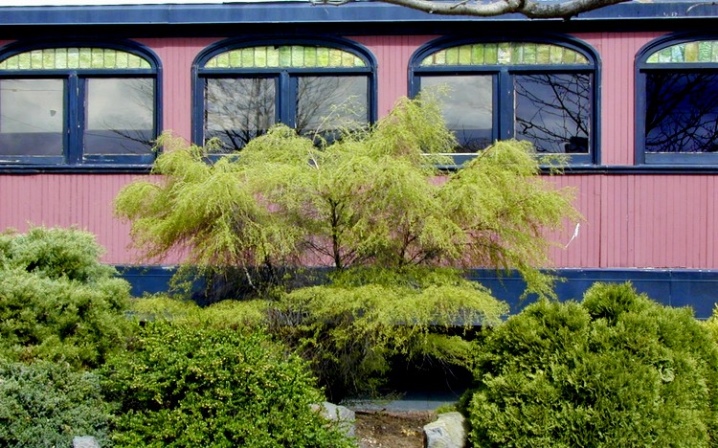
The main difference between culture is a dwarf form. The height of the tree does not exceed 1.5 meters, the width is 1.8 meters. It can grow in areas with almost any soil. Very hardy and light-requiring, although it can tolerate a small shadow.
Other
- Long trunk Is a deciduous variety with an umbrella-shaped crown. The height of the tree reaches 10 meters, the width of the crown is 5 meters. Leaves are large in size with a glossy surface, can be up to 10 centimeters long. The bark is white.
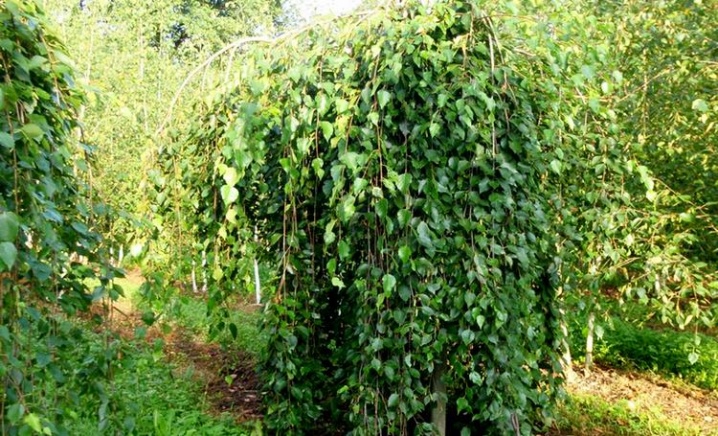
- "Crispa" - the height of the birch is no more than 8 meters. The leaves are deeply dissected, light green in color. Photophilous and frost-resistant culture. Will easily endure dry periods.
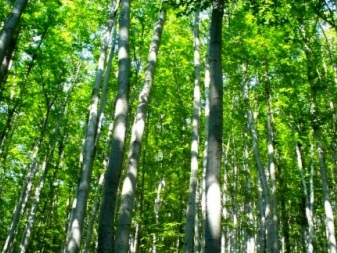
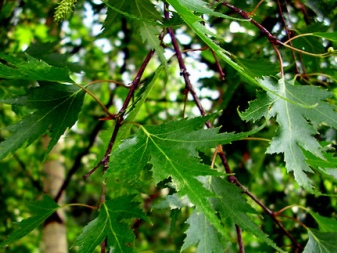
- "Gracilis" - of all the hanging forms, this is the most graceful and delicate. It reaches a height of 10 meters, but it grows rather slowly. For 20 years, it grows by about 5 meters. Frost-resistant, not afraid of drought.
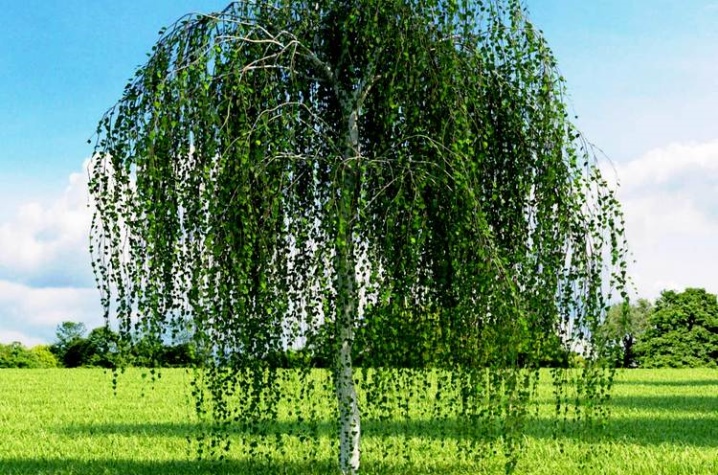
Planting and leaving
Hanging birch growing on the territory of the city rarely lives more than 150 years. But thanks to proper planting and care, the age can reach 500 years. To grow a tree on your own, you must first take into account the condition of the soil. It must be moist and have a good drainage layer. In no case should there be groundwater nearby. The culture is not afraid of drought, but in dry weather it needs timely watering.
Seeds are planted immediately after they are harvested.
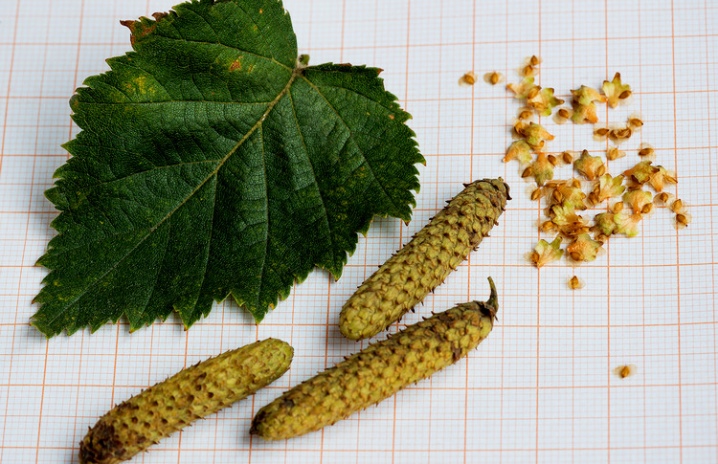
For germination, special conditions are not needed, a cool and well-lit greenhouse is enough. The seeds are placed on the soil covered with mulch. After the seeds have sprouted, they are placed in separate pots and stored in a cool place. In the spring, when the frost is over, the seedlings are planted in open ground. If the culture was planted immediately in open ground, then the seedling cannot be transplanted to a new place for two years.
Warty birch is unpretentious to care for, the most important point is sufficient lighting. The distance between the shoots should be about 4 meters. Water the tree directly to the root. Watering after planting should be done frequently, but in small portions of water.
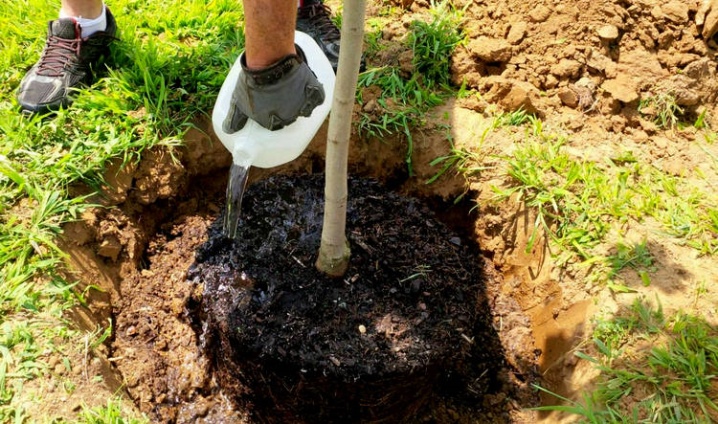
So that in the future the crown of the birch does not cast too much shadow on the site, it is formed with pruners and scissors. In order for the tree to have a weeping crown shape, it can be grafted. But since it is difficult to do it yourself, it is better to buy an already grafted seedling in the store.
Reproduction
Propagation of silver birch can take place in two ways.
- In nature the plant is so tenacious that it can germinate more than once in the place where a fire once happened. Reproduction usually takes place in open areas, by seeds from female inflorescences. The tree begins to bear fruit only at the 10th year of life. Seeds fall 2 times: one part in the fall, the second - in the spring.
- Artificial reproduction used for decoration. To begin with, the seeds are allowed to ripen - this can be determined by how intensely the earrings have turned brown. Ripening lasts until autumn.
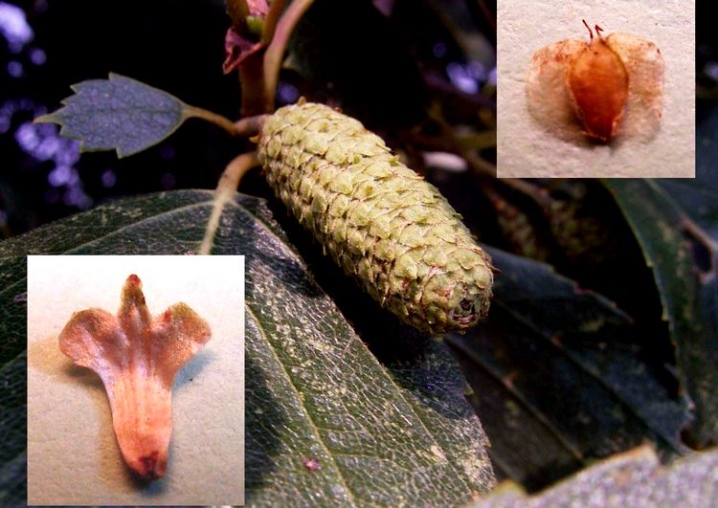
Diseases and pests
Pests begin to appear on a weakened tree - it can be tinder fungus, birch sponge, honey agarics, chaga... Moreover, chaga parasitizes only on live birches. Raids silkworm caterpillars, tube-runner beetles, May beetles leaves are usually exposed.
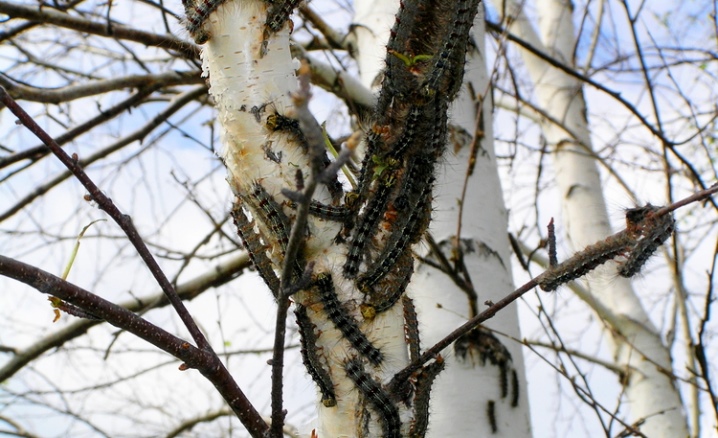
The bark of a tree for many insects serves as a special place for laying larvae - a similar process also damages the tree.
Use in landscape design
Hanging birch of ornamental varieties goes very well with various species of trees and shrubs. For example, with coniferous crops you can create an interesting contrast - in the fall, the birch will turn yellow, and the needles will remain green.
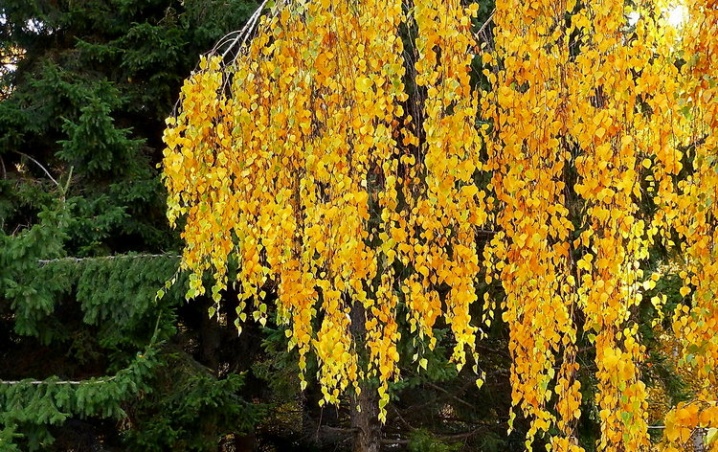
The most popular of the ornamental crops is the standard birch. Its branches grow strictly downward and periodically need processing. The crone can be shaped in the most interesting ways.
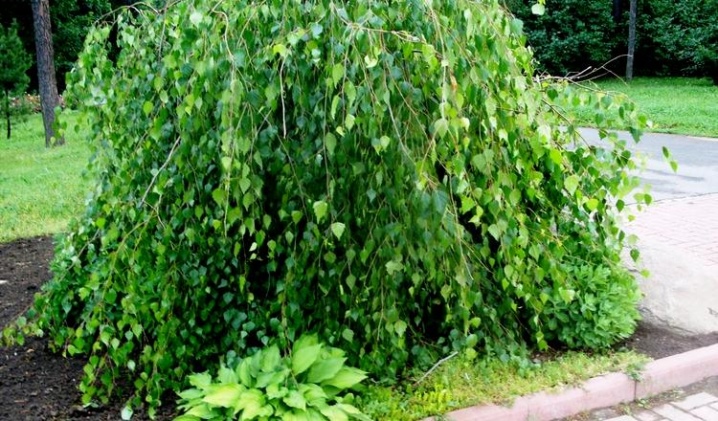
Warty birch is used for landscaping areas - forest park zones, alleys, private estates.

For more information about silver birch, see the video below.



































































The comment was sent successfully.